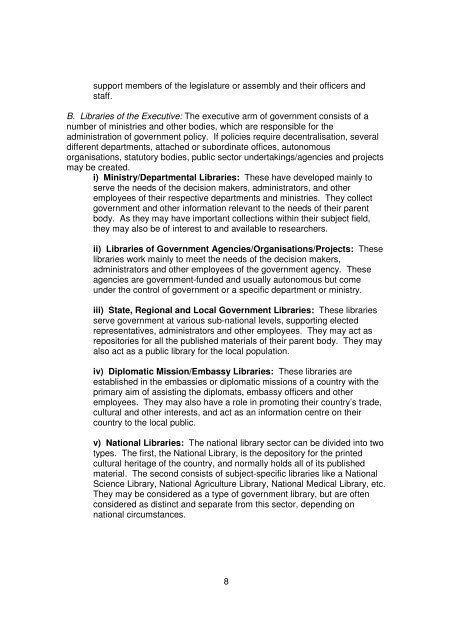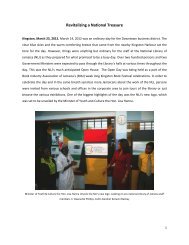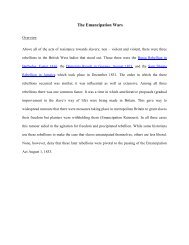Guidelines for Libraries of Government Departments - IFLA
Guidelines for Libraries of Government Departments - IFLA
Guidelines for Libraries of Government Departments - IFLA
You also want an ePaper? Increase the reach of your titles
YUMPU automatically turns print PDFs into web optimized ePapers that Google loves.
support members <strong>of</strong> the legislature or assembly and their <strong>of</strong>ficers and<br />
staff.<br />
B. <strong>Libraries</strong> <strong>of</strong> the Executive: The executive arm <strong>of</strong> government consists <strong>of</strong> a<br />
number <strong>of</strong> ministries and other bodies, which are responsible <strong>for</strong> the<br />
administration <strong>of</strong> government policy. If policies require decentralisation, several<br />
different departments, attached or subordinate <strong>of</strong>fices, autonomous<br />
organisations, statutory bodies, public sector undertakings/agencies and projects<br />
may be created.<br />
i) Ministry/Departmental <strong>Libraries</strong>: These have developed mainly to<br />
serve the needs <strong>of</strong> the decision makers, administrators, and other<br />
employees <strong>of</strong> their respective departments and ministries. They collect<br />
government and other in<strong>for</strong>mation relevant to the needs <strong>of</strong> their parent<br />
body. As they may have important collections within their subject field,<br />
they may also be <strong>of</strong> interest to and available to researchers.<br />
ii) <strong>Libraries</strong> <strong>of</strong> <strong>Government</strong> Agencies/Organisations/Projects: These<br />
libraries work mainly to meet the needs <strong>of</strong> the decision makers,<br />
administrators and other employees <strong>of</strong> the government agency. These<br />
agencies are government-funded and usually autonomous but come<br />
under the control <strong>of</strong> government or a specific department or ministry.<br />
iii) State, Regional and Local <strong>Government</strong> <strong>Libraries</strong>: These libraries<br />
serve government at various sub-national levels, supporting elected<br />
representatives, administrators and other employees. They may act as<br />
repositories <strong>for</strong> all the published materials <strong>of</strong> their parent body. They may<br />
also act as a public library <strong>for</strong> the local population.<br />
iv) Diplomatic Mission/Embassy <strong>Libraries</strong>: These libraries are<br />
established in the embassies or diplomatic missions <strong>of</strong> a country with the<br />
primary aim <strong>of</strong> assisting the diplomats, embassy <strong>of</strong>ficers and other<br />
employees. They may also have a role in promoting their country’s trade,<br />
cultural and other interests, and act as an in<strong>for</strong>mation centre on their<br />
country to the local public.<br />
v) National <strong>Libraries</strong>: The national library sector can be divided into two<br />
types. The first, the National Library, is the depository <strong>for</strong> the printed<br />
cultural heritage <strong>of</strong> the country, and normally holds all <strong>of</strong> its published<br />
material. The second consists <strong>of</strong> subject-specific libraries like a National<br />
Science Library, National Agriculture Library, National Medical Library, etc.<br />
They may be considered as a type <strong>of</strong> government library, but are <strong>of</strong>ten<br />
considered as distinct and separate from this sector, depending on<br />
national circumstances.<br />
8
















